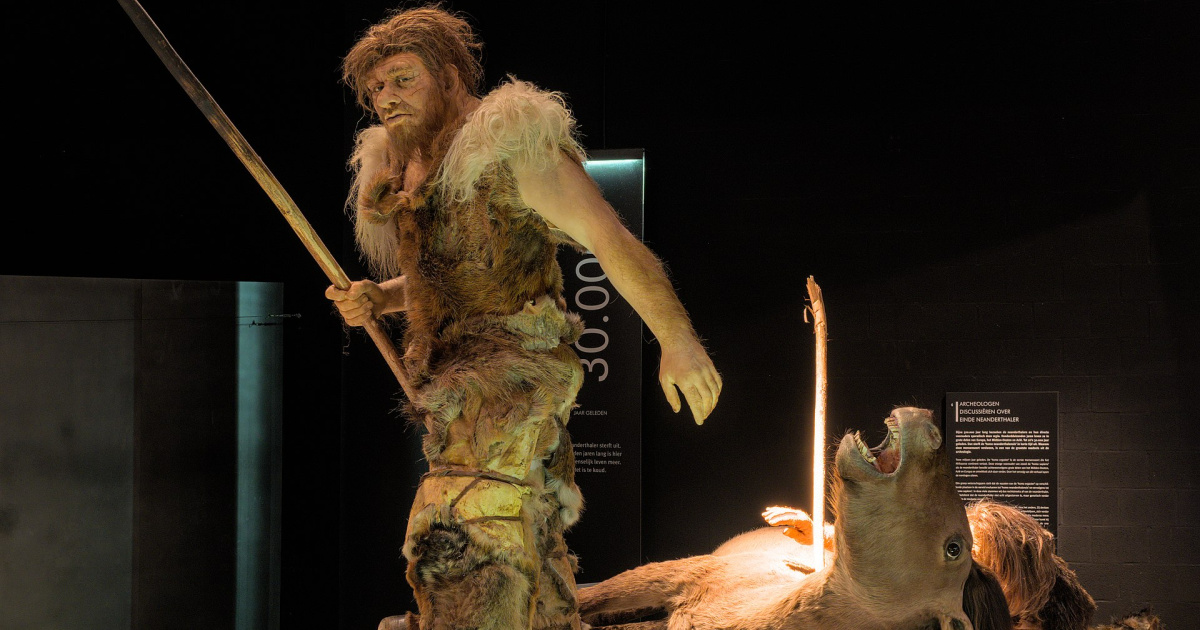
You probably know by now that the Neanderthal people lived before and then alongside modern humans in the way, way back. Their DNA and its prevalence in people today is proof that they interacted on a regular basis.
This recent discovery gives us more detailed insight into how their society functioned, as well as how they lived on a daily basis.
The rock shelter was uncovered in the Spanish Pyrenees and contains animal bones and stone tools that reveal hominids who were flexible and adaptable, and smarter than we originally gave them credit for.
The camp, known as Abric Pizarro, dates to the marine isotope stage 4 (MIS 4) period, around 100,000 to 65,000 years ago. Our species made it to the area during MIS 3, and Neanderthals became extinct relatively soon thereafter.
Dr. Sofia Samper Carro, one of the authors of the study, issued a statement on the findings.
“This is one of the most interesting things about this site, to have this unique information about when Neanderthals were alone and living in harsh conditions and how they thrived before modern humans appeared.”
For a long time, researchers have believed the Pyrenees region was an unlikely spot to find evidence of Neanderthals.
“It had previously been considered unsuitable for stable and continuous Neanderthal presence during MIS 4 due to millennial-scale climatic shifts, which would have translated into extreme arid conditions with sharp temperature falls.”
This settlement, though, shows how their ingenuity enabled them to blossom in the time when they thrived.
For example, the bones at the site reveal that Neanderthals were able to adapt their hunting strategies to smaller prey when bigger animals were more scarce.
“Our surprising findings at Abric Pizarro show how adaptable Neanderthals were. The animal bones we have recovered indicate that they were successfully exploiting the surrounding fauna, hunting red deer, horses and bison, but also eating freshwater turtles and rabbits, which imply a degree of planning rarely considered for Neanderthals.”
Everything points to these Neanderthals being intelligent and capable.
“Neanderthal groups were adept hunters, with a broad knowledge of the surrounding landscape, which they exploited efficiently. The stone tools recovered from Abric Pizarro display a variety of different knapping techniques, providing yet more evidence for the hominids’ expert ability to utilize the resources in their environment.”
We still don’t know what caused Neanderthals to disappear so soon after coming into contact with modern humans, but knowing more about their communities in the periods beforehand could provide some necessary clues.
“Neanderthals disappeared around 40,000 years ago. Suddenly, we modern humans appear in this region of the Pyrenees, and the Neanderthals disappear. But before that, Neanderthals had been living in Europe for almost 300,000 years.”
I definitely want to know what happened when Neanderthals and humans met.
But based on what has happened pretty much every time we’ve encountered a native culture since then, I think I can probably guess.
If you thought that was interesting, you might like to read a story that reveals Earth’s priciest precious metal isn’t gold or platinum and costs over $10,000 an ounce!